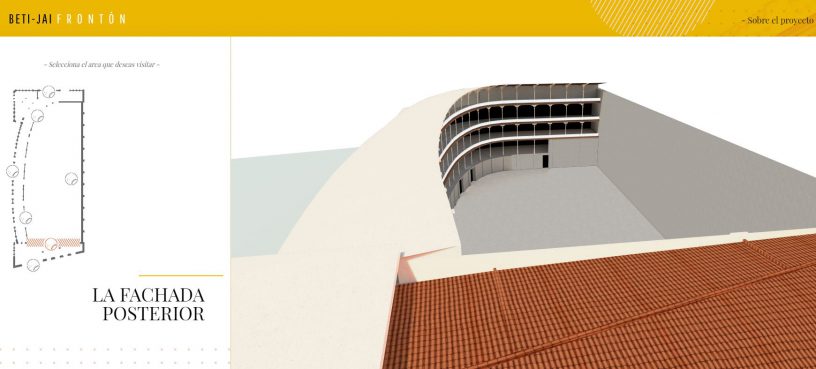The Beti Jai («always party» in Basque) is a Basque pelota fronton that is located in Madrid and was declared in 2011 as an Asset of Cultural Interest.
The building, a project of the architect Joaquín Rucoba, was inaugurated in 1894 and was used for this purpose until 1919. After that period, it was used for multiple purposes, from a police station in the Civil War, to be a rehearsal place for musical bands, even to become a mechanical workshop when it was sold to Citroën. After going through different hands, it was expropriated by the Madrid City Council and is currently in the process of rehabilitation.
In order to show the citizens this Architectural Jewel, Plain Concepts was entrusted with the creation of a public portal where they can make a virtual 3D visit of it, where the citizen is given the opportunity to navigate through the different views and stays of this emblematic building.
Visit the website here http://betijai.azurewebsites.net/
This project encourages the cultural dissemination of our heritage, it provides a very visual information to the public about this building and exercises a great pedagogical work even without having to physically visit it. On the other hand, this portal shows the rehabilitation work being carried out by the Madrid City Council.
The web has been designed with a «responsive» design so that you can make this virtual tour in 3D from any device and not just on a computer. In this way, any visitor who comes to the building can tour their rooms while supporting this virtual visit and expanding in more detail the particularities of each stay.
The visualization and animations created through BabylonJS is an amazing example of the capabilities of the technology.
- Photo-realistic environments
- Support of the openBIM standard for the transfer of information.
- 3D and 360º representation of the models both on the computer screen and in the virtual reality glasses.
- Navigation in real time through the different sections of the building, pieces, rooms, spaces, factories…
- Hierarchical structure of the components that allows greater focus on the sections that are most important for the current context.
- Layered architecture that allows the building of new behaviors on the entities while maintaining compatibility.
The technologies used have been:
- 3D Design
- BabylonJS
- React





Deja un comentario